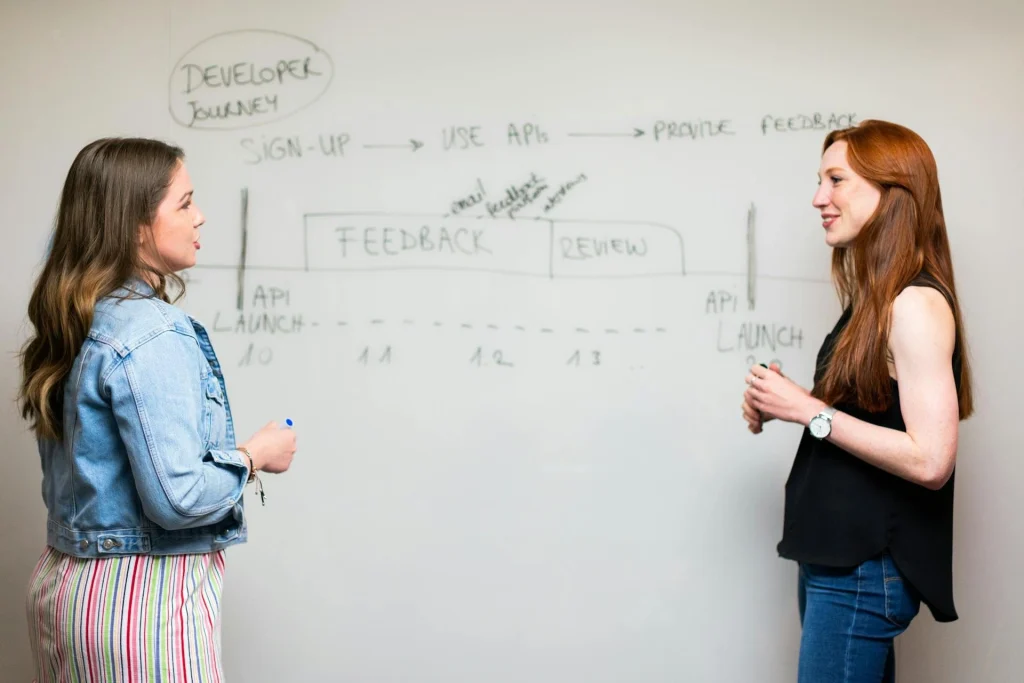A No-Nonsense Guide to Getting Your Website Right—From the Start
Building a WordPress website is easy. Building the right WordPress website? That takes planning. If you’ve ever watched a website project go off the rails—blown budgets, missed deadlines, or sites that just don’t do what you hoped—you know exactly what I mean. It’s not about fancy tech or perfect code. Success starts before the first page is even built, with a solid, realistic plan.
So if you’re thinking about a new website (or a redesign), here’s how to make sure your project is set up for success. I’ll walk you through the essential steps—from clarifying your goals to mapping timelines and getting the right people involved—so you can launch a WordPress site that actually moves your business forward.
Define Clear Goals—And Write Them Down
It sounds obvious, but most website projects don’t start with real clarity about what success looks like. “We need a new site” isn’t a goal. Here’s how to do this right:
- What do you want the website to *achieve*? Be specific. Is it to generate more leads? Sell products? Build authority? Support your existing clients?
- How will you measure success? (E.g., 30% more enquiries, X monthly sales, reduced support emails.)
- What are your non-negotiables? Maybe it’s lightning-fast load times, or an easy-to-edit backend. Spell it out now.
Pro tip: Don’t just talk about goals—write them down. Share them with everyone involved, and keep them front and centre throughout the project.
Identify All Stakeholders and Gather Input Early
A successful website isn’t built in a vacuum. You might be the decision-maker, but input from the right people makes all the difference.
- Who are your stakeholders? (Not just the boss—think marketing, sales, support, maybe even your customers.)
- What are their needs and pain points? Sales might need a better CRM integration. Support might want a knowledge base. Your customers might just want things to load faster.
- How will you gather input? Surveys, quick calls, or a kickoff workshop. Keep it simple, but don’t skip it.
Why this matters: If you skip this, you’ll find out what people really wanted—when it’s too late to change it.
Audit What You Have (And What’s Missing)
If you’re redesigning an existing site, don’t reinvent the wheel. Spend some time taking stock:
- Content audit: What pages, posts, downloads, and resources do you already have? What’s still useful?
- Technical audit: How’s your current performance, SEO, and mobile experience? Any security gaps?
- Brand audit: Does your current messaging, look and feel, or logo need updating?
For new sites, create a wishlist: What needs to be live on day one, and what can wait for later?
Map Your Audience and Their Journeys
A website is for people, not just for Google. Take time to define:
- Who is your primary audience? Be specific. “Small businesses” isn’t enough—what kind of businesses, in which sector, at what stage?
- What do they need from your website? Quick contact, pricing info, case studies, demos, resources?
- What actions do you want them to take? Make these actions obvious in your navigation and calls to action.
Mapping out key user journeys (“I want to get a quote”; “I want to download a guide”; “I want to book a call”) will shape your content and structure.
Build a Realistic Sitemap and Content Plan
This is where planning gets concrete.
- Draft your sitemap: What are your main pages, and how do they connect? (E.g., Home > Services > Web Design / Web Consultancy / SEO; About; Contact; Blog.)
- Prioritise pages: What’s essential for launch? What can be added later?
- Outline each page: What’s the goal of each page? What needs to be written, designed, or photographed?
Tip: A simple spreadsheet or a mindmap is your friend here. Don’t overcomplicate it.
Set Your Budget (And Build in a Buffer)
Every project has limits. Be upfront about your budget and discuss it early with any web designer or agency.
- What’s your realistic budget for design, development, and content?
- What about extras? (Copywriting, images, SEO setup, ongoing support.)
- What happens if you need more features? Budget for at least 10–20% extra for surprises (trust me, they happen).
Define Roles and Responsibilities
Who’s doing what—and by when? You don’t need a Gantt chart, but you do need clarity.
- Project owner: Who’s the final decision-maker?
- Content owners: Who’s writing or supplying the content?
- Technical lead: Who’s handling hosting, domains, and integrations?
- Approval process: How will decisions and revisions be managed?
Document this somewhere everyone can access.
Create a Realistic Timeline (With Milestones)
Unrealistic deadlines are the death of good websites. Plan your timeline backwards from your desired launch date.
- Key milestones: Kickoff, sitemap signoff, content ready, design draft, development, testing, go-live.
- Who needs to deliver what—and when?
- What are your dependencies? (E.g., content before design, design before development.)
Add some buffer for feedback, revisions, and life happening.
Choose the Right Tools and Technology
WordPress gives you flexibility, but you still need to make some choices:
- Theme or custom build? Off-the-shelf themes are quick but less flexible; custom builds are pricier but tailored.
- Plugins: Only use what you need, and prefer reputable, well-supported options. Avoid plugin overload—it slows your site and creates security risks.
- Hosting: Good hosting isn’t optional. Fast, secure, and with reliable support—don’t go for the cheapest option.
If you’re not sure, ask your developer for recommendations—and get them to explain their choices.
Plan for Launch, Testing, and Ongoing Care
A website launch isn’t the finish line—it’s the starting point.
- Testing: Plan time for testing on different devices and browsers. Check forms, links, and key functions.
- SEO and analytics: Make sure tracking is in place before launch. Redirect old URLs if you’re relaunching.
- Backups and security: Set up automated backups and basic security from day one.
- Ongoing maintenance: Who’s responsible for updates, support, and regular check-ups? (If you need help, my WordPress Care Plans are built exactly for this.)
Communicate—and Keep Communicating
Regular check-ins keep everyone aligned and avoid nasty surprises.
- Set up a simple project dashboard (even a Google Doc will do).
- Share progress, blockers, and upcoming tasks.
- Be clear about feedback deadlines—slow feedback is a hidden project killer.
Be Ready to Adapt (But Don’t Lose Focus)
Plans are great, but reality often has other ideas. Stay flexible, but don’t let endless tweaks derail your launch. If you discover a big new idea or feature mid-project, log it for phase two. Get your core site live, then iterate.
Final Thoughts: Planning Pays Off
Planning a successful WordPress website project isn’t about bureaucracy—it’s about clarity, alignment, and making your investment count. Every minute you spend mapping out goals, gathering input, and creating a roadmap saves hours (and headaches) down the line.
If you’re about to start a WordPress project—or you’ve had one go sideways in the past—use these steps as your blueprint. Want an experienced partner to guide you through the process, minus the stress? Let’s chat about your website project and make sure your next launch is your best yet.
Ready to plan your next WordPress site the right way? Learn more about my WordPress website solutions and get started.





